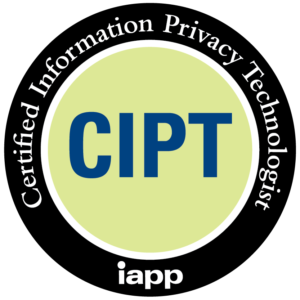






1. Duomenų subjektas turi teisę reikalauti, kad duomenų valdytojas apribotų duomenų tvarkymą kai taikomas vienas iš šių atvejų:







a) asmens duomenų subjektas užginčija duomenų tikslumą tokiam laikotarpiui, per kurį duomenų valdytojas gali patikrinti asmens duomenų tikslumą;
b) asmens duomenų tvarkymas yra neteisėtas ir duomenų subjektas nesutinka, kad duomenys būtų ištrinti, ir vietoj to prašo apriboti jų naudojimą;
c) duomenų valdytojui nebereikia asmens duomenų duomenų tvarkymo tikslais, tačiau jų reikia duomenų subjektui siekiant pareikšti, vykdyti arba apginti teisinius reikalavimus; arba
2. Kai duomenų tvarkymas yra apribotas pagal 1 dalį, tokius asmens duomenis galima tvarkyti, išskyrus saugojimą, tik gavus duomenų subjekto sutikimą arba siekiant pareikšti, vykdyti arba apginti teisinius reikalavimus, arba apsaugoti kito fizinio ar juridinio asmens teises, arba dėl svarbaus Sąjungos arba valstybės narės viešojo intereso priežasčių.
ISO/IEC 27701, adopted in 2019, added additional ISO/IEC 27002 guidance for PII controllers.
Here is the relevant paragraph to article 18(2) GDPR:
7.2.2 Identify lawful basis
Control
The organization should determine, document and comply with the relevant lawful basis for the processing of PII for the identified purposes.
Implementation guidance
Some jurisdictions require the organization to be able to demonstrate that the lawfulness of processing was duly established before the processing.
[…]
Sign in
to read the full text
3. Duomenų subjektą, kuris pasiekė, kad būtų apribotas duomenų tvarkymas pagal 1 dalį, duomenų valdytojas informuoja prieš panaikinant apribojimą tvarkyti duomenis.
ISO/IEC 27701, adopted in 2019, added additional ISO/IEC 27002 guidance for PII controllers.
Here is the relevant paragraph to article 18(3) GDPR:
7.3.2 Determining information for PII principals
Control
The organization should determine and document the information to be provided to PII principals regarding the processing of their PII and the timing of such a provision.
Implementation guidance
The organization should determine the legal, regulatory and/or business requirements for when information is to be provided to the PII principal (e.g. prior to processing, within a certain time from when it is requested, etc.) and for the type of information to be provided.
[…]
Sign in
to read the full text
The right to restriction of processing is one of the eight rights granted by the GDPR, but it is not the easiest one to understand at first glance. It can be summed up as an obligation on behalf of the controller to retain data, but they can neither be processed in any other manner nor modified…
[…]
Sign in
to read the full text
Concern: Request to restrict the processing of my personal data
Dear Madam, Dear Sir,
I am entitled to ask you to restrict the processing of my personal data under Article 18(1) of the General Data Protection Regulation (GDPR)…
[…]
Sign in
to read the full text
ISO/IEC 27701, adopted in 2019, added additional ISO/IEC 27002 guidance for PII controllers.
Here is the relevant paragraph to article 18 GDPR:
7.3.4 Providing mechanism to modify or withdraw consent
Control
The organization should provide a mechanism for PII principals to modify or withdraw their consent.
Implementation guidance
The organization should inform PII principals of their rights related to withdrawing consent (which may vary by jurisdiction) at any time, and provide the mechanism to do so.
[…]
Sign in
to read the full text
(67) būdai, kuriais ribojamas asmens duomenų tvarkymas, galėtų, inter alia, būti tokie: laikinai perkelti atrinktus duomenis į kitą tvarkymo sistemą, padaryti atrinktus asmens duomenis neprieinamus naudotojams arba laikinai išimti paskelbtus duomenis iš interneto svetainės. Automatiniuose susistemintuose rinkiniuose duomenų tvarkymo ribojimas iš esmės turėtų būti užtikrinamas techninėmis priemonėmis taip, kad asmens duomenys nebūtų toliau tvarkomi ir jų nebebūtų galima pakeisti. Tai, kad asmens duomenų tvarkymas yra apribotas, sistemoje turėtų būti aiškiai nurodyta;